读者可订阅专栏:Java开发指南 |【CSDN@秋说】

文章目录
- if 语句
- if...else 语句
- if...else if...else 语句
- 嵌套的 if…else 语句
- switch 语句
Java 中的条件语句用于根据条件来执行不同的代码块。条件语句允许程序根据表达式的结果选择性地执行代码。
条件语句分为if 语句、if…else 语句、if…else if…else 语句、嵌套的 if…else 语句及switch语句五种。
if 语句
if 语句用于在条件为真时执行一段代码块。如果条件为真,则执行 if 语句中的代码块;如果条件为假,则跳过 if 语句中的代码块。
if (condition) {// 在条件为真时执行的代码块
}
public class ice {public static void main(String[] args) {int i = 0;if(i==1){System.out.println("ice");}}
}
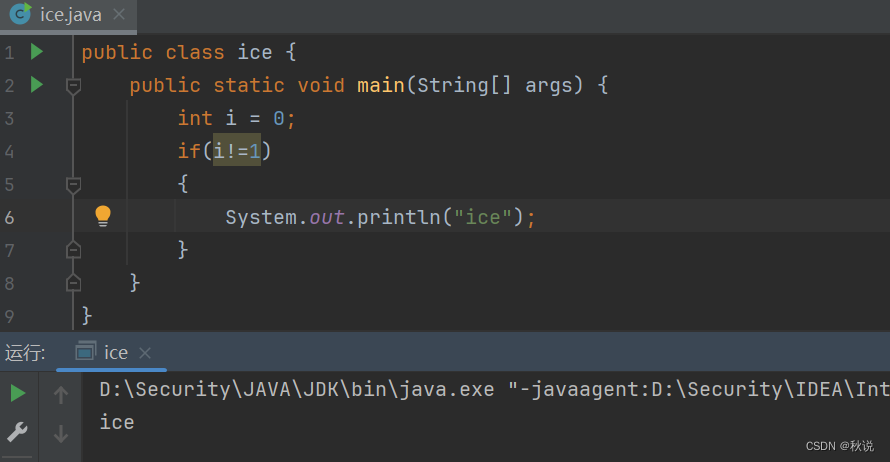
if…else 语句
if...else 语句用于在条件为真时执行一个代码块,而在条件为假时执行另一个代码块。
if (condition) {// 在条件为真时执行的代码块
} else {// 在条件为假时执行的代码块
}
public class ice {public static void main(String[] args) {int i = 0;if(i==1){System.out.println("ice");}else {System.out.println("ICE");}}
}

if…else if…else 语句
if...else if...else 语句用于在多个条件之间进行选择,它允许您测试多个条件并执行相应的代码块。当条件列表中的条件顺序地被检查,并且第一个为真时,与该条件相关联的代码块将被执行。如果没有条件为真,则执行最后的 else 块(如果存在)。
if (condition1) {// 在条件1为真时执行的代码块
} else if (condition2) {// 在条件2为真时执行的代码块
} else {// 在以上条件都不为真时执行的代码块
}
public class ice {public static void main(String[] args) {int i = 0;if(i==1){System.out.println("ice");}else if(i==2){System.out.println("ICE");}else{System.out.println("choice");//i!=1,i!=2,所以输出choice}}
}
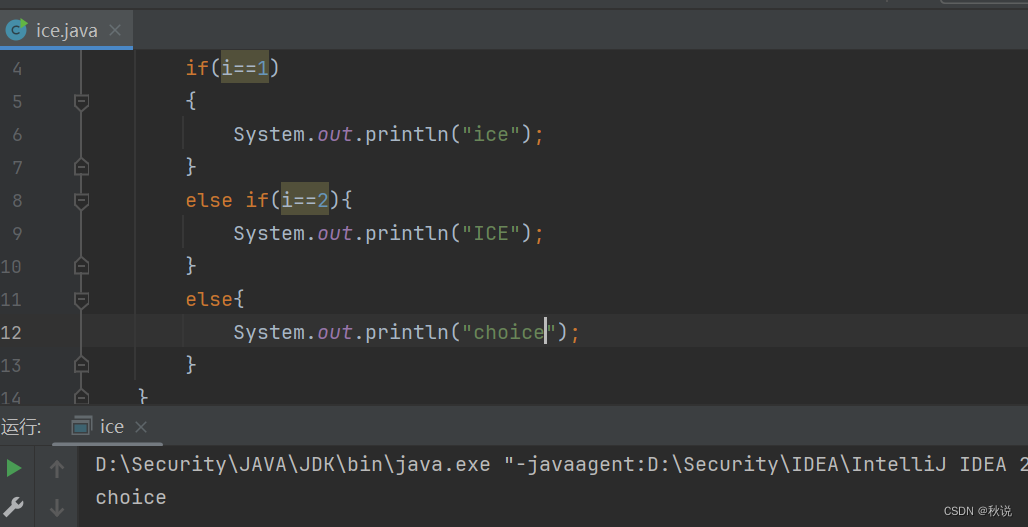
嵌套的 if…else 语句
我们可以在另一个 if 或者 else if 语句中使用 if 或者 else if 语句。
语法:
if(布尔表达式 1){如果布尔表达式 1的值为true执行代码if(布尔表达式 2){如果布尔表达式 2的值为true执行代码}
}
public class ice {public static void main(String[] args) {int x=1;if(x==1) //成立{x++;if(x==2) //成立{System.out.println(x);}}}
}
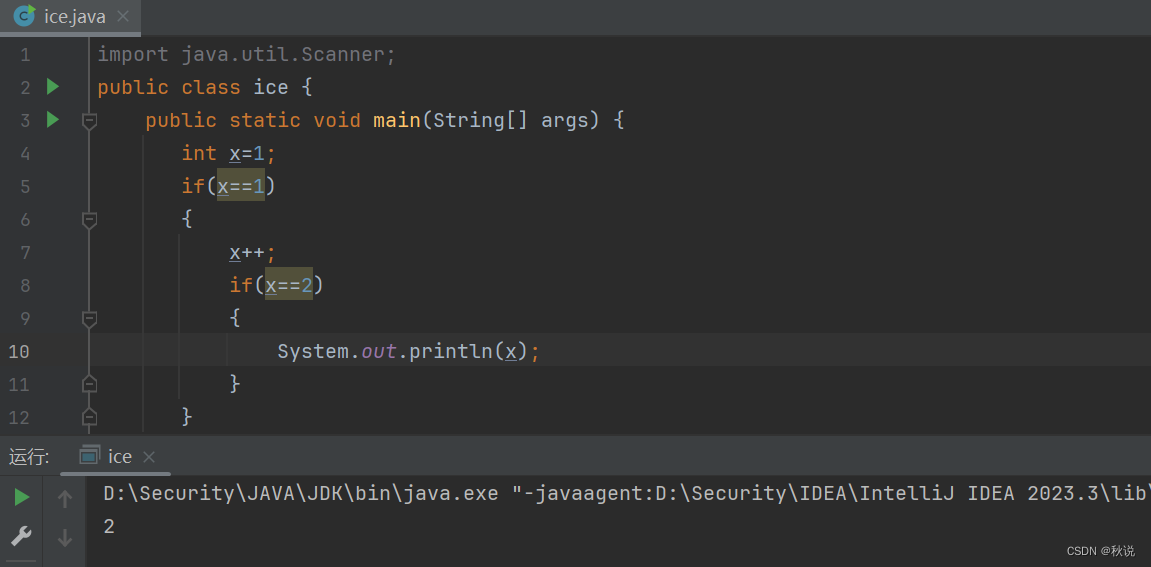
switch 语句
switch 语句用于根据表达式的值选择性地执行代码块。它是一种更灵活的条件语句,适用于需要测试多个可能值的情况。
switch (expression) {case value1:// 当表达式的值等于 value1 时执行的代码块break;case value2:// 当表达式的值等于 value2 时执行的代码块break;// 可以有更多的 case 语句default:// 当表达式的值不匹配任何 case 时执行的代码块
}
switch 语句中的变量类型可以是: byte、short、int 或者 char。从 Java SE 7 开始,switch 支持字符串 String 类型。
int变量类型实例:
import java.util.Scanner;
public class ice {public static void main(String[] args) {Scanner scanner = new Scanner(System.in);int x = scanner.nextInt(); // 从键盘获取整数值赋给变量 xswitch (x){case 1:System.out.println(1+'!');break;case 2:System.out.println(2+'!');break;case 3:System.out.println(3+'!');break;default:System.out.println("Null");}scanner.close();}
}
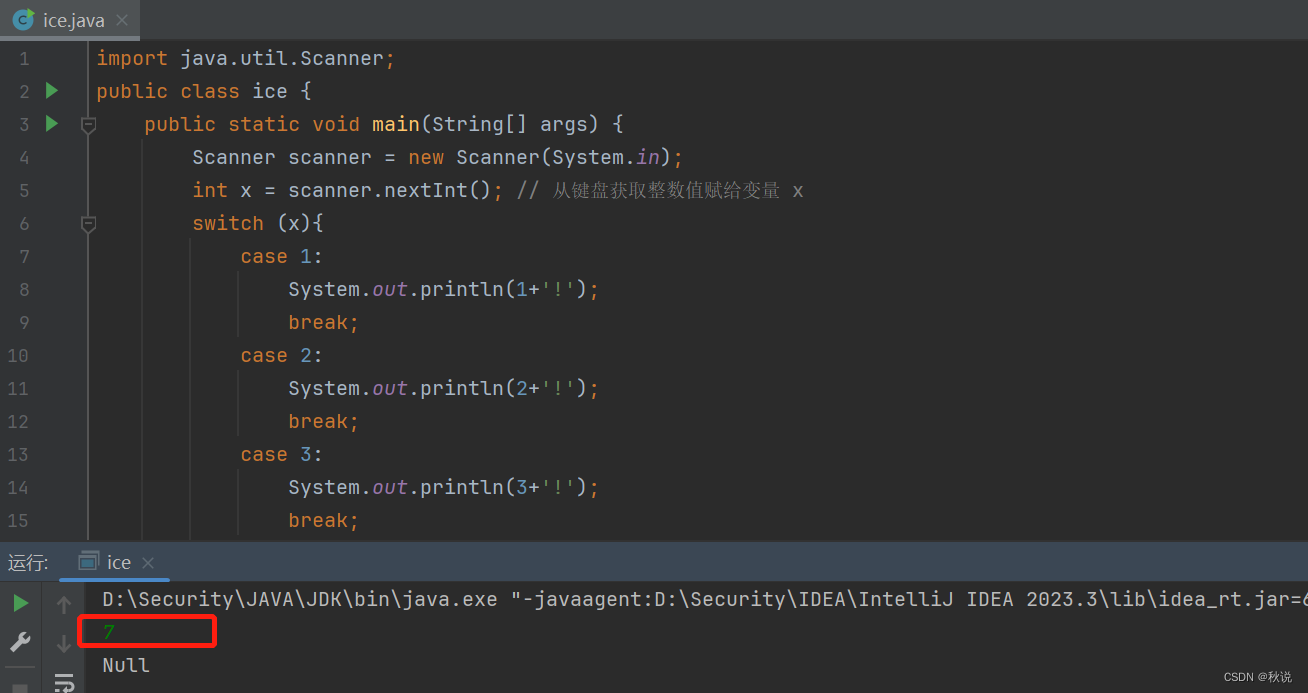
char变量类型实例:
public class ice {public static void main(String args[]){char grade = 'A';switch(grade){case 'A' :System.out.println("好");break;case 'B' :case 'C' :System.out.println("好好");break;//若grade为B或C,均输出“好好”case 'D' :System.out.println("好好好");break;case 'F' :System.out.println("好好好好");break;default :System.out.println("好好好好好");}}
}
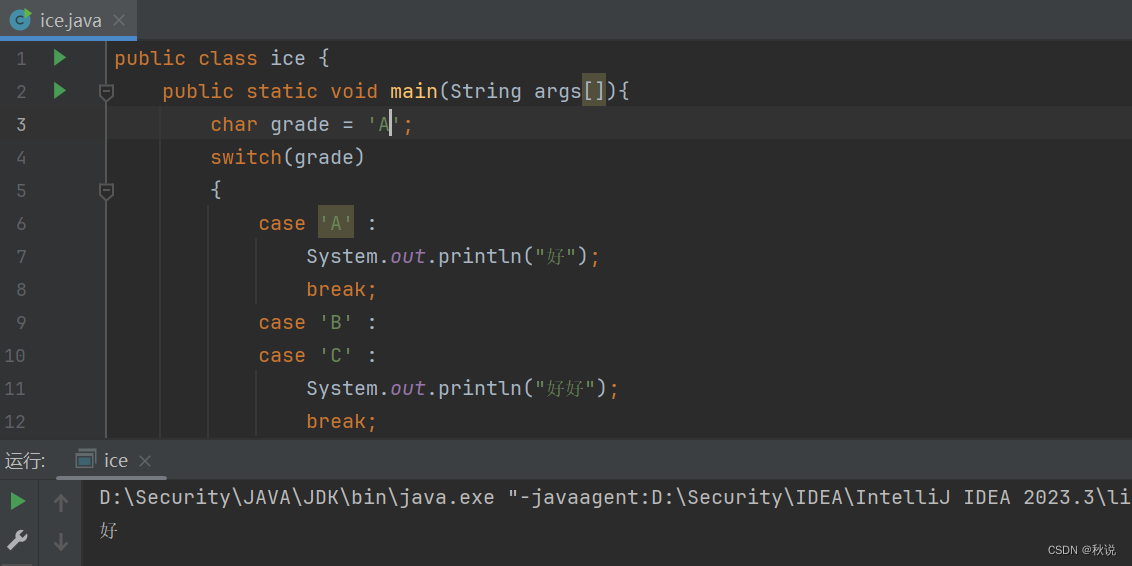
同时我们也可以在switch中灵活运用break:
import java.util.Scanner;
public class ice {public static void main(String[] args) {Scanner scanner = new Scanner(System.in);int x = scanner.nextInt(); // 从键盘获取整数值赋给变量 xswitch (x){case 1:System.out.println(1+"!");break;case 2:System.out.println(2+"!");case 3:System.out.println(3+"!");break;default:System.out.println("Null");}scanner.close();}
}
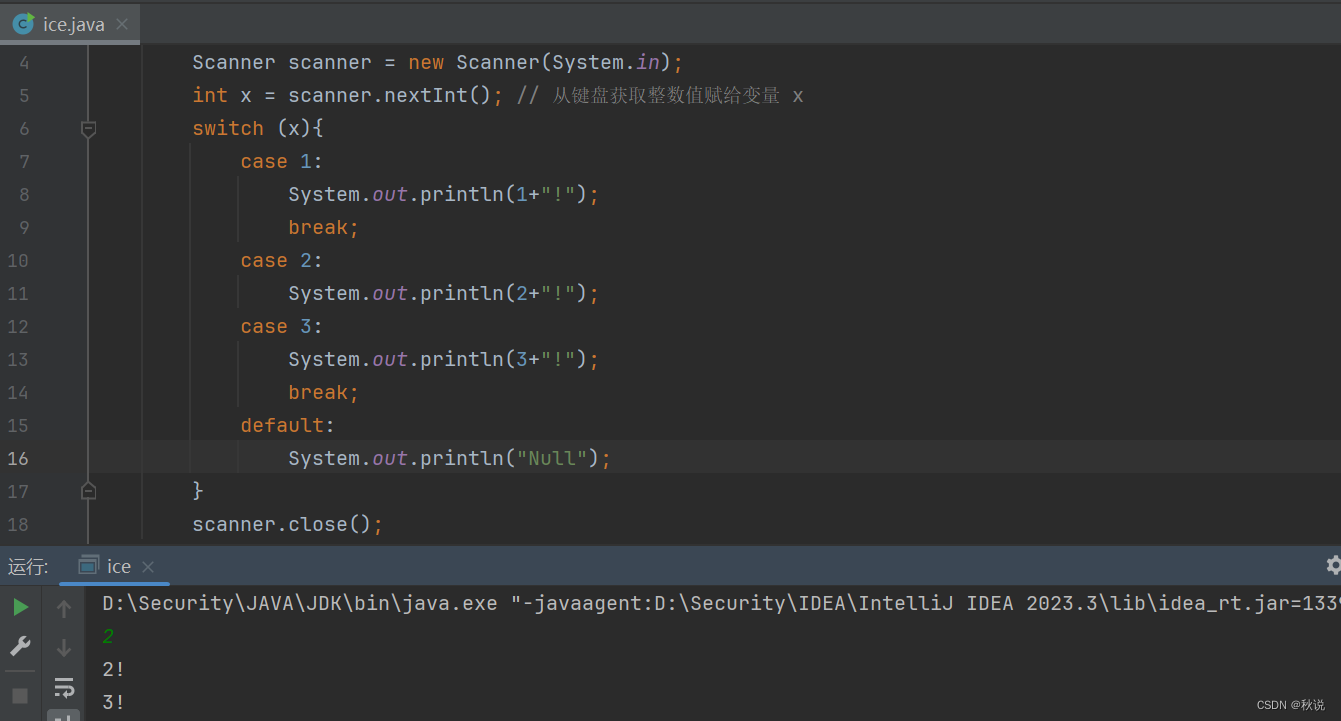
当我们输入2时,进入case 2模块,但该模块没有break,导致输出2!后仍进入case 3模块,进而输出3!,接着跳出循环。

![[Win11·Copilot] Win11 系统更新重启后任务栏 Copilot 图标突然消失 | 解决方案](http://pic.xiahunao.cn/[Win11·Copilot] Win11 系统更新重启后任务栏 Copilot 图标突然消失 | 解决方案)

)




的使用示例)







)


